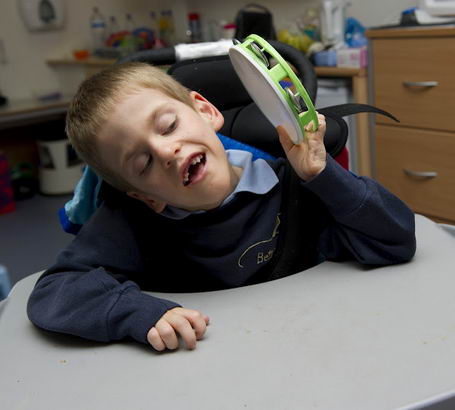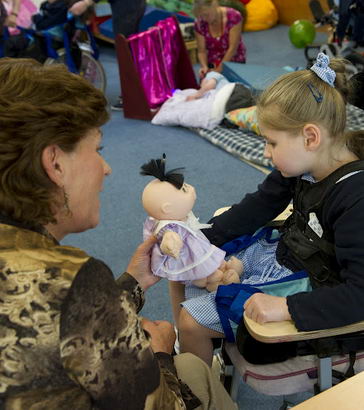Here we will consider further how some pupils deliberately try to communicate but lack the ability to use spoken words or even signs and symbols. They are said to be at a preverbal stage. In order to assess their skills, it is possible to make use of the Preverbal Communication Schedule (PVCS) as this is an effective tool for assessing communicative behaviour and identifying teaching targets.
The PVCS is an example of a checklist-cum-rating scale which allows teachers to analyse the ways in which pupils communicate through non-verbal means and evaluate their particular strengths. You will consider this tool in some depth and reflect upon possible or current use in your own context.

The purpose of the PVCS is to help teachers working with pupils with minimal or no verbal skills.
The PVCS assessment of pupils helps to establish the pupils' existing abilities and identify targets for teaching programmes aimed at establishing use of speech, signs, symbols or other forms of non-verbal communication as appropriate.
The authors of the PVCS were Chris Kiernan and Barbara Reid. They
argued that the whole approach to teaching communication skills should be pupil-led rather than teacher-led. In order to learn
communicative skills pupils need opportunities to control their environment; they should be allowed to make choices, to express
preferences, to express rejection of things or activities, and to achieve pleasurable
interactions with others.

Read about the PVCS.
Kiernan and Reid argued that the whole approach to teaching communication skills should be pupil-led rather than teacher-led. Do you agree? Should activities be pupil-led? What is your experience of this and how does this notion impact upon your practice?
The PVCS is now out of print. At St. Luke's Primary School, the staff
produced their own checklist-cum-rating scale based on parts of the PVCS.
They use the rating scale from the PVCS, ie U = Usually,
R = Rarely and N = Never.
Print off the record form in the following document.
Once you have completed the form, you may decide to adapt it to suit your own needs and context. Try to identify how this information will impact upon or feed into the subsequent interventions and approaches. It is important to remember that a central purpose to any assessment is to ensure the effectiveness and appropriateness of any intervention or approach adopted.